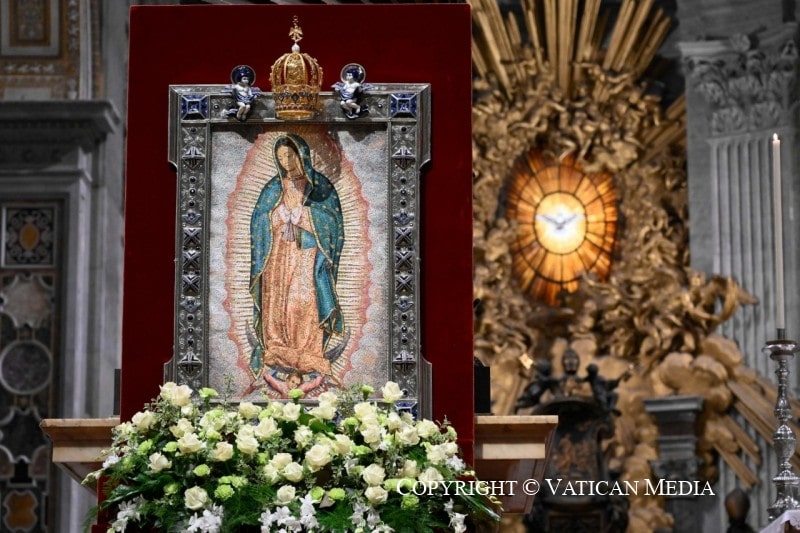First, the image of Our Lady imprinted on the tilma is a representation of the Church, which is the body of Christ in the world. The Church is called to be humble, to welcome the gift of God’s virtues, and to perfume the world with works of good.
Secondly, the flowers that Our Lady asks Juan Diego to pick represent the virtues that the Lord instils in our hearts. The act of picking them reminds us to accept these virtues with gratitude and to put them into practice in our daily lives.
Thirdly, Our Lady’s words, “Am I not here, who am your mother?”, remind us that she is always with us, that she loves and protects us. This message gives us hope and strength in difficult times.
Finally, Pope Francis points out that the message of Guadalupe should not be used to support social or political ideologies. The Guadalupian message is a message of love, peace, and unity.
Pope Francis’ homily:
The first thing that comes to mind is the image of Our Lady imprinted on the tilma.
It is the image of the first disciple, of the mother of believers, of the Church itself, which is imprinted in the humility of what we are and what we have, which is not worth much, but which will be something great in the eyes of God. It is imprinted on the tilma.
Our Lady asks Juan Diego to do a small job, to pick some flowers. The flowers, in mysticism, signify the virtues that the Lord instils in the heart, they are not our own work. The act of picking them reveals to us that God wants us to accept this gift, to perfume our weak reality with works of good, eliminating hatred and fear.
If you look at the message of Guadalupe, Our Lady’s words: “Am I not here, who am your mother”, take on a new meaning. This “being” of the Virgin, this “being” is to remain permanently imprinted on these poor clothes, perfumed by virtues gathered in a world that seems incapable of producing them. Virtues that fill our poverty in the simplicity of small gestures of love, that illuminate our tilma, without us realising it, with the image of a Church that carries Christ in her bosom.
The image, the tilma, the roses, this is the message. As simple as that, without gloss. Together with the certainty that she is my mother, who is here. And this message defends us from so many social and political ideologies with which this Guadalupian reality is so often used to justify itself, to justify itself, and to make money. The Guadalupian message does not tolerate ideologies of any kind. Only the image, the tilma, the roses.










